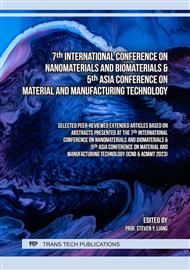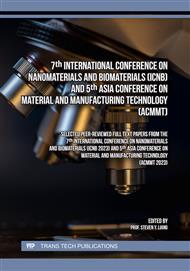p.15
p.21
p.27
p.35
p.41
p.47
p.55
p.61
p.69
Passing through the Vicinity of a Singularity on Off-Line Teaching for End-Milling by Industrial Robot
Abstract:
This study proposes a method for passing through the singularity and its vicinity, the biggest challenge on off-line teaching for end-milling by industrial robots. When passing through the singularity and its vicinity, some joints rotate rapidly. However, by changing the wrist configuration: NONFLIP and FLIP, when passing through the singularity, the robot motion can be stabilized. This was verified with a six-degree-of-freedom manipulator. This robot was moved in a linear path such that the end-effector passed through the wrist singularity and its vicinity, and the encoder values were measured simultaneously. The results showed that the commanded rotational speed of the wrist joint exceeded the maximum rotational speed of the servomotor when passing through the wrist singularity and its vicinity, resulting in a trajectory tracking error. However, by changing the wrist configuration, the robot could pass through the singularity and its vicinity without decreasing the trajectory tracking accuracy.
Info:
Periodical:
Pages:
61-68
Citation:
Online since:
March 2024
Authors:
Price:
Сopyright:
© 2024 Trans Tech Publications Ltd. All Rights Reserved
Share:
Citation:



